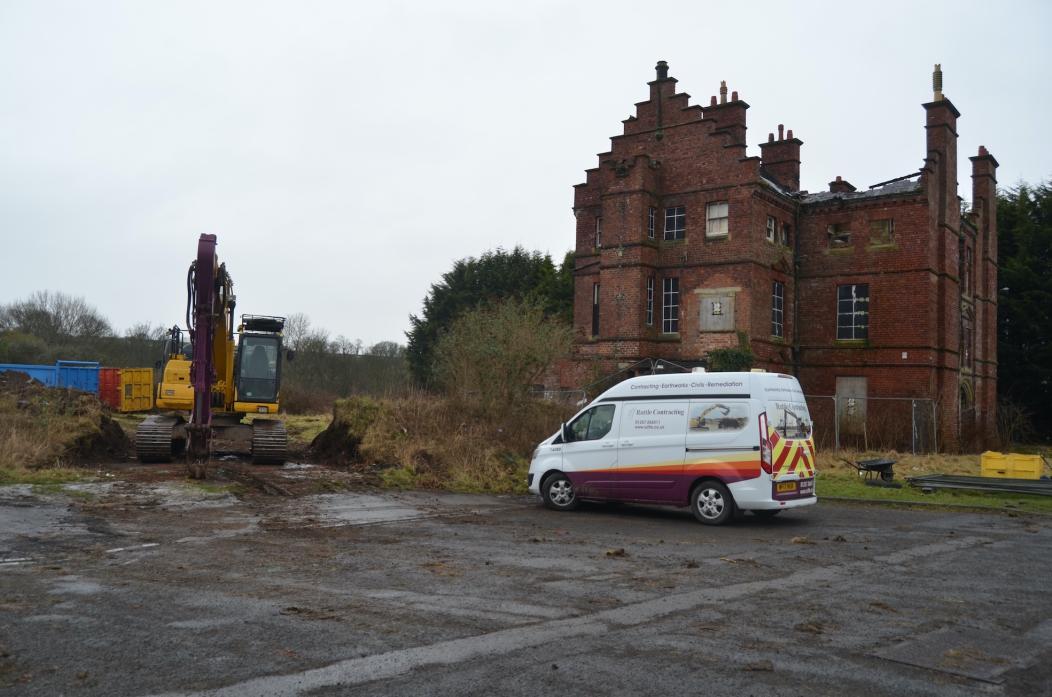
It began life as an orphanage and ended it as a hated eyesore. Now, St Peter’s, at Gainford, has been pulled down will the landowners finally reach an agreement over a new development? Nicky Carter reports
THE red-brick blot on Gainford’s landscape is finally gone after more than two decades of wrangling, planning rows and frustration about what to do with arson-hit former school.
Two weeks ago, bulldozers moved on to site at St Peter’s and made light work of razing the last remaining part of the structure to the ground, 125 years after it was first built.
St Peter’s School was initially constructed as a Catholic Poor Law orphanage in 1899. The purpose-built premises could accommodate 300 boys aged from two to ten and was run by the Daughters of Charity of St Vincent de Paul.
Just two years later, it was accredited for use as a certified school allowing it to receive boys boarded out by the workhouse authorities, who paid six shillings a week for each child they placed.
During the Second World War boys at St Peter’s were transferred to Tudhoe with the Gainford site being used to temporarily house evacuated inmates from an approved school in Widnes.
St Peter’s itself became an approved school in 1940, taking up to 120 Roman Catholic boys below the age of 13 managed by the Hexham and Newcastle Rescue Society.
By 1973 it was being run as St Peter’s Community School in conjunction with Teesside Borough Council. Due to financial pressures it was closed in 1983.
The building and land were sold off to a consortium for £130,000. Although some of the property’s buildings were then sold on, one wing of St Peter’s was converted into a nursing home for the elderly in 1986. But by the mid-1990s the main building was empty and since 1998, it has been left to become a magnet for anti-social behaviour and arsonists.
Attempts to redevelop the former school came to nothing with planners at Teesdale District Council refusing to consider plans for a residential development on the grounds that the area was earmarked for business use.
Following the switch to the Durham unitary authority in 2009 housing developments have been considered and approved.
But that’s where it gets complicated.
The derelict building and part of the site (including the adjacent allotments) is owned by a Lancashire-based company called Ruttle Plant.
The land to the rear of St Peter’s is in the hands of house builder Kebbell Homes.
The two companies have been unable to reach an agreement for the development of the whole site and Kebbell’s most recent plans to build homes on the land it owns were refused as county councillors said they wanted to see the whole site developed.
In 2016 part of the four-storey building was badly damaged by a fire, which is thought to have started deliberately, after which buildings to the rear were demolished and a bund made of rubble established around the building.
At one point, the windows – all of which had been smashed – were boarded up and painted to look like they had frames in an effort to stave off the vandals.
It didn’t work and following repeated arson attacks it was declared unsafe by the fire service, who recommended it be torn down four years ago.
Gainford Parish Council, fed up with inaction and worried about the dangerous condition, petitioned the county council to purchase the site so it could be torn down.
Long-serving parish councillor Simon Platten said at the time: “They should compulsory purchase if they can’t get the two landowners to agree.”
Ruttle Plant Holdings were finally granted permission to demolish the remaining school building in 2023 after structural engineers said it was “in danger of imminent collapse” despite Durham’s own conservation officer arguing against tearing it down.
In a report Bryan Harris said: “Where there is evidence of deliberate neglect of, or, damage to, a heritage asset, the deteriorated state of the heritage asset should not be taken into account in any decision. It is considered that this application has been brought about by deliberate neglect.”
The officer said the applicant had not demonstrated “meaningful attempts to retain the building” and removal of it would not be of public benefit.
Despite the approval Ruttle Plant Holdings, not happy with several conditions imposed, appealed the demolition order and although the county council served an enforcement notice, this had to be suspended until the hearing.
However, before the case came before magistrates at Darlington, Ruttle opted to send in the demolition crews and residents in Gainford have been celebrating ever since.
Wendy Withers, who was the chairwoman of the parish council in the early 2000s when planning wrangles on the building began, said: “It is a shame that the building was left to decay by the owners instead of it being utilised for the benefit of the village.
“Instead Gainford residents have endured decades of dereliction, vandalism, arson, trespass and vermin infestation at the gateway to our otherwise beautiful and peaceful village. Personally, I am very happy to see that it has finally been demolished and no longer have to pass such a blight on the landscape every day.”
So what now for the site? As it has done for years, that would appear to be in the hands of Ruttle Plant, Kebbell Homes and the planning department of Durham County Council. A quick resolution may be wishful thinking.





